Themed collection Metal-Organic Frameworks and Hybrid Materials

Metal–Organic Frameworks and Hybrid Materials: From Fundamentals to Applications
Welcome to this CrystEngComm themed issue on metal–organic frameworks and hybrid materials.

CrystEngComm, 2015,17, 197-198
https://doi.org/10.1039/C4CE90162B
Simulation and modelling of MOFs for hydrogen storage
We review the current state of the art in molecular simulations and modelling of MOFs for hydrogen storage.
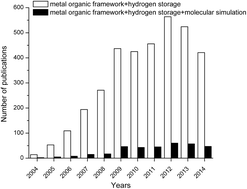
CrystEngComm, 2015,17, 261-275
https://doi.org/10.1039/C4CE01711K
Crystal engineering, structure–function relationships, and the future of metal–organic frameworks
After twenty years of vigorous R&D, where are MOFs headed?
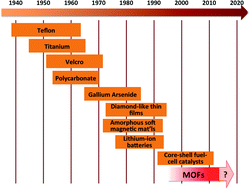
CrystEngComm, 2015,17, 229-246
https://doi.org/10.1039/C4CE01693A
Water interactions in metal organic frameworks
Insight into the structural variation of metal organic framework materials upon hydration.
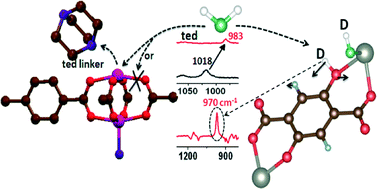
CrystEngComm, 2015,17, 247-260
https://doi.org/10.1039/C4CE01406E
Metal–organic frameworks as hosts for nanoparticles
The fabrication of metal nanoparticles in porous host matrices, especially metal–organic frameworks, has become of great interest in the last years and will be comprehensively discussed in this article.
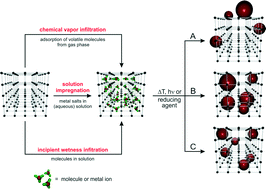
CrystEngComm, 2015,17, 199-217
https://doi.org/10.1039/C4CE01251H
Structural features and applications of metal–organic frameworks containing thiazole- and thiazolidine-based spacers
This highlight describes the crystal structures and network topology of thiazole- and thiazolidine-containing MOFs and CPs along with their applications in the fields of CO2 adsorption, luminescence, magnetism and heterogeneous catalysis.
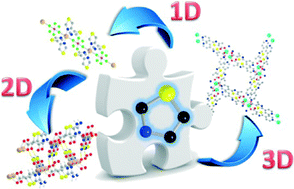
CrystEngComm, 2015,17, 218-228
https://doi.org/10.1039/C4CE00896K
Enhanced CO2 capture capacities and efficiencies with N-doped nanoporous carbons synthesized from solvent-modulated, pyridinedicarboxylate-containing Zn-MOFs
A pyridinedicarboxylate-containing Zn-MOF structure was modulated using pyridine and 4,4′-bipyridine to generate highly porous N-doped carbon adsorbents for CO2 capture.
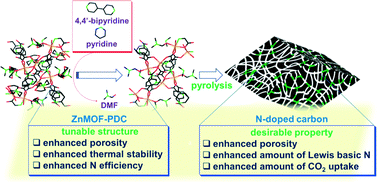
CrystEngComm, 2015,17, 8015-8020
https://doi.org/10.1039/C5CE00828J
Mechanical properties of zeolitic metal–organic frameworks: mechanically flexible topologies and stabilization against structural collapse
We report the low elastic modulus of a zeolitic MOF, along with stabilization against structural collapse by filling with solvent.
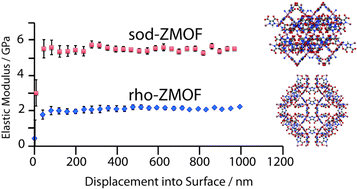
CrystEngComm, 2015,17, 286-289
https://doi.org/10.1039/C4CE02145B
Fabrication and non-covalent modification of highly oriented thin films of a zeolite-like metal–organic framework (ZMOF) with rho topology
The fabrication and non-covalent modification of highly oriented thin films of zeolite like-metal–organic framework (ZMOF) with rho topology are reported.
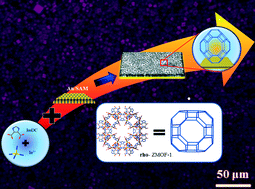
CrystEngComm, 2015,17, 290-294
https://doi.org/10.1039/C4CE01402B
Structural trends in hybrid perovskites [Me2NH2]M[HCOO]3 (M = Mn, Fe, Co, Ni, Zn): computational assessment based on Bader charge analysis
Charge partition between the metal and the ligand governs the geometry evolution in hybrid perovskites.
![Graphical abstract: Structural trends in hybrid perovskites [Me2NH2]M[HCOO]3 (M = Mn, Fe, Co, Ni, Zn): computational assessment based on Bader charge analysis](/en/Image/Get?imageInfo.ImageType=GA&imageInfo.ImageIdentifier.ManuscriptID=C4CE01387E&imageInfo.ImageIdentifier.Year=2015)
CrystEngComm, 2015,17, 295-298
https://doi.org/10.1039/C4CE01387E
Crystals for sustainability – structuring Al-based MOFs for the allocation of heat and cold
The special water adsorption behaviour of CAU-10-H makes it ideal for application in adsorption driven heat pumps and chillers.
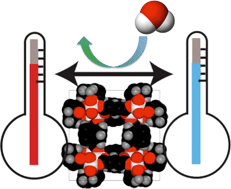
CrystEngComm, 2015,17, 281-285
https://doi.org/10.1039/C4CE01073F
Experimental evidence of negative linear compressibility in the MIL-53 metal–organic framework family
The negative linear compressibility behaviour of the MIL-53 family of materials is experimentally demonstrated.
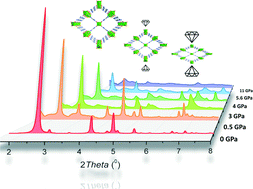
CrystEngComm, 2015,17, 276-280
https://doi.org/10.1039/C4CE00436A
Enhanced gas-sorption properties of a high surface area, ultramicroporous magnesium formate
The gas-sorption properties of a high surface area α-magnesium formate with an expanded unit cell are reported. The material is stable in NH3 and shows very high CH4/N2 (5.2) selectivity.
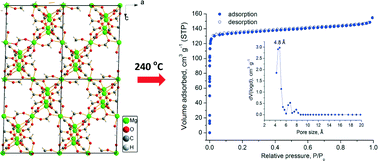
CrystEngComm, 2015,17, 532-539
https://doi.org/10.1039/C4CE01667J
Ab initio investigation of the affinity of novel bipyrazolate-based MOFs towards H2 and CO2
Two recently synthesized bipyrazole-based metal organic frameworks were characterized and their different affinity toward small molecules was interpreted using ab initio simulations.
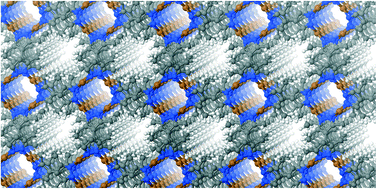
CrystEngComm, 2015,17, 448-455
https://doi.org/10.1039/C4CE01989J
Structure-directing factors when introducing hydrogen bond functionality to metal–organic frameworks
Introduction of functional groups into an isoreticular series of MOFs may be complicated by noncovalent interactions between interpenetrated nets inducing differing topologies.
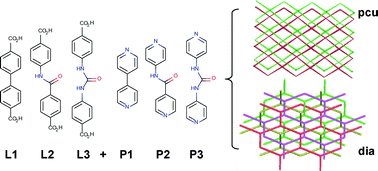
CrystEngComm, 2015,17, 299-306
https://doi.org/10.1039/C4CE01379D
The Lewis acidic and basic character of the internal HKUST-1 surface determined by inverse gas chromatography
For the design of metal–organic frameworks with specific properties, a chromatographic method to quantitatively determine their Lewis acid base characteristics was demonstrated with HKUST-1.
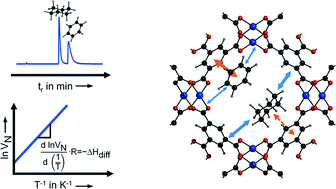
CrystEngComm, 2015,17, 438-447
https://doi.org/10.1039/C4CE01327A
Copolymerisation at work: the first example of a highly porous MOF comprising a triarylborane-based linker
A copolymerisation approach was successfully utilised to create the first highly accessible, non-interpenetrated MOF comprising a triarylborane carboxylate linker.
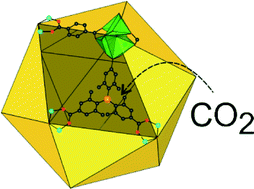
CrystEngComm, 2015,17, 307-312
https://doi.org/10.1039/C4CE01400F
Fe/Ga-CFA-6 – metal organic frameworks featuring trivalent metal centers and the 4,4′-bipyrazolyl ligand
Two novel metal–organic frameworks Fe-/Ga-CFA-6 based on trivalent metal centers and 4,4′-bipyrazolate linkers are presented and characterized in this work.

CrystEngComm, 2015,17, 313-322
https://doi.org/10.1039/C4CE01583E
Surfactant-directed syntheses of mesostructured zinc imidazolates: formation mechanism and structural insights
A detailed study on the formation mechanism, local and long-range structures of surfactant-directed lamellar zinc imidazolates is presented.
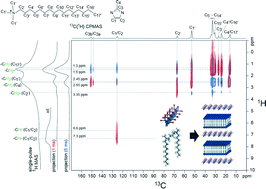
CrystEngComm, 2015,17, 463-470
https://doi.org/10.1039/C4CE01512F
Flexibility transition and guest-driven reconstruction in a ferroelastic metal–organic framework
Copper(I) tricyanomethanide shows exceptional mechanical and coordination flexibility in response to temperature and guest sorption.
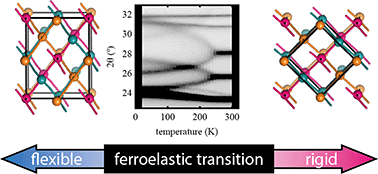
CrystEngComm, 2015,17, 361-369
https://doi.org/10.1039/C4CE01572J
Reductive coordination replication of V2O5 sacrificial macrostructures into vanadium-based porous coordination polymers
The reductive coordination replication of V2O5 patterns provides the vanadium(III) species required to build the mesostructures of [V(OH)ndc]n.
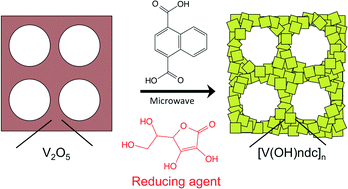
CrystEngComm, 2015,17, 323-330
https://doi.org/10.1039/C4CE01501K
Transition metal inclusion in RhoZMOF materials
Porous RhoZMOF is a negatively charged zeolite-like MOF material susceptible to post-synthesis modification by an ion-exchange process replacing as-synthesized organic cations with transition metals.
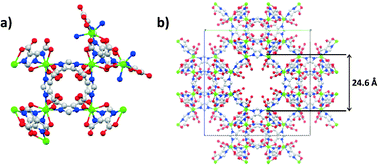
CrystEngComm, 2015,17, 338-343
https://doi.org/10.1039/C4CE01401D
Vapochromic properties versus metal ion coordination of β-bispyrazolato–copper(II) coordination polymers: a first-principles investigation
Vapochromic properties of Cu(II) coordination polymers are explained on the basis of first principles calculations.

CrystEngComm, 2015,17, 407-411
https://doi.org/10.1039/C4CE01373E
First examples of aliphatic zirconium MOFs and the influence of inorganic anions on their crystal structures
Three new Zr-MOFs based on aliphatic linker molecules and the role of the anions present during synthesis that affect their framework structures are reported.

CrystEngComm, 2015,17, 331-337
https://doi.org/10.1039/C4CE01457J
Active site engineering in UiO-66 type metal–organic frameworks by intentional creation of defects: a theoretical rationalization
The catalytic activity of the Zr-benzenedicarboxylate (Zr-BDC) UiO-66 increases by using synthesis modulators as trifluoroacetate (TFA) or hydrochloric acid (HCl), which can be removed post-synthetically.

CrystEngComm, 2015,17, 395-406
https://doi.org/10.1039/C4CE01672F
Enhanced CO2 adsorption capacity of amine-functionalized MIL-100(Cr) metal–organic frameworks
Functionalization of the MIL-100(Cr) metal–organic framework with alkylamines (ethylenediamine and N,N′-dimethylethylenediamine) improves carbon dioxide sorption properties, especially in the case of ethylenediamine.
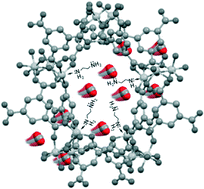
CrystEngComm, 2015,17, 430-437
https://doi.org/10.1039/C4CE01265H
Elastic properties and acoustic dissipation associated with a disorder–order ferroelectric transition in a metal–organic framework
Elastic properties and acoustic dissipation associated with the disorder–order ferroelectric transition in a single crystal metal–organic framework (MOF), [NH4][Zn(HCOO)3], have been investigated using resonant ultrasound spectroscopy (RUS) in the temperature range between 10 K and 300 K.
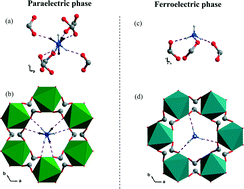
CrystEngComm, 2015,17, 370-374
https://doi.org/10.1039/C4CE01386G
Isoreticular isomerism in 4,4-connected paddle-wheel metal–organic frameworks: structural prediction by the reverse topological approach
By screening the possible range of isoreticular isomers, the structure of copper paddle-wheel-based metal–organic frameworks with nbo-b topology can be predicted and the formation of different phases can be rationalized.

CrystEngComm, 2015,17, 344-352
https://doi.org/10.1039/C4CE01574F
Location of CO2 during its uptake by the flexible porous metal–organic framework MIL-53(Fe): a high resolution powder X-ray diffraction study
The accurate location of CO2 guest molecules as a function of pressure has been determined in the prototypical flexible MOF MIL-53 (Fe).

CrystEngComm, 2015,17, 422-429
https://doi.org/10.1039/C4CE01393J
Quantum mechanical predictions to elucidate the anisotropic elastic properties of zeolitic imidazolate frameworks: ZIF-4 vs. ZIF-zni
We use density functional theory to reveal the detailed elastic properties of two topical ZIF materials comprising the same chemical composition but different crystalline structures. ZIF-4 was found to exhibit a negative Poisson's ratio, representing the first ‘auxetic-ZIF’ to be identified.
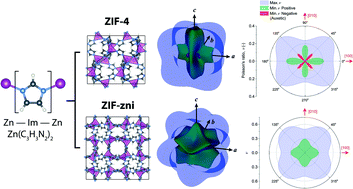
CrystEngComm, 2015,17, 375-382
https://doi.org/10.1039/C4CE01564A
Energetics, thermal isomerisation and photochemistry of the linkage-isomer system [Ni(Et4dien)(η2-O,ON)(η1-NO2)]
Isomerisation of an NO2 ligand coordinated to Ni in a molecular crystal is explored using a range of quantum chemical techniques.
![Graphical abstract: Energetics, thermal isomerisation and photochemistry of the linkage-isomer system [Ni(Et4dien)(η2-O,ON)(η1-NO2)]](/en/Image/Get?imageInfo.ImageType=GA&imageInfo.ImageIdentifier.ManuscriptID=C4CE01411A&imageInfo.ImageIdentifier.Year=2015)
CrystEngComm, 2015,17, 383-394
https://doi.org/10.1039/C4CE01411A
Insights into the microscopic behaviour of nanoconfined water: host structure and thermal effects
The hydration of nanoporous materials is relevant to many fundamental and industrial applications.
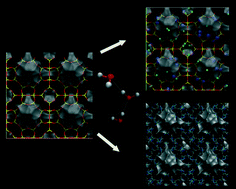
CrystEngComm, 2015,17, 412-421
https://doi.org/10.1039/C4CE01335B
A Zn azelate MOF: combining antibacterial effect
A novel biocompatible and bioactive zinc azelate metal–organic framework (BioMIL-5) was hydrothermally synthesized with interesting long-term antibacterial properties.
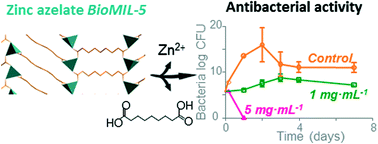
CrystEngComm, 2015,17, 456-462
https://doi.org/10.1039/C4CE00885E
Fluorine magic: one new organofluorine linker leads to three new metal–organic frameworks
2-Fluoro-1,3,5-benzene-tricarboxylic acid (Fbtc) is used as new linker for metal–organic frameworks and leads to three MOFs UHM-31, -32 and -33.
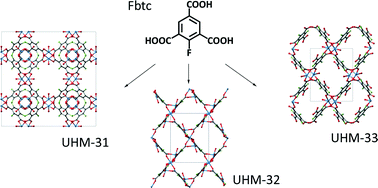
CrystEngComm, 2015,17, 353-360
https://doi.org/10.1039/C4CE00408F
About this collection
This issue highlights recent advances in the rapidly expanding field of Metal-Organic Frameworks (MOFs) and hybrid materials, featuring cutting-edge research at the interface of crystal engineering, materials science, physics, chemistry and biomedicine. It is guest edited by Professor Jin-Chong Tan (University of Oxford) and Dr Bartolomeo Civalleri (Universita' di Torino).